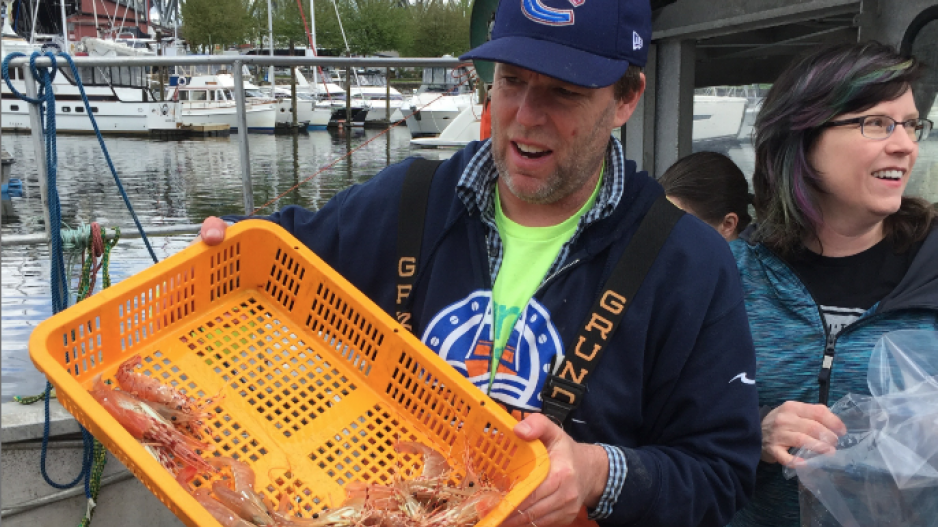Vancouver's spot prawn season began with a frenzy Friday afternoon (May 12) when fisherman Stewart McDonald, delivered the first boatload of the year to False Creek Fishermen's Wharf.
A crowd of 50 eager consumers were gathered on the float waiting for him, ready to pay $20 a pound for for his catch.
There's enough for everyone, McDonald announced as he eased his boat into the slip. A deckhand secured the lines, the crowd surged forward and McDonald scooped out hundreds of live, twitching prawns, many over 15 centimetres in length. His wife Lesley began taking orders and collecting the money thrust towards her.
Over the past decade spot prawns have become renowned in Vancouver as a B.C. delicacy. They are a wild, local, sustainably-harvested seafood that has captured the attention of the city's top chefs, whose enthusiasm in turn, has sparked a foodie love affair with Pandalus platyceros, the largest and sweetest-tasting species of prawn in Canada.
McDonald was able to satisfy the customers waiting at the dock Friday, but most of the fleet's catch that day went to restaurants or was reserved for Vancouver's 11th annual spot prawn festival. The festival was held Saturday at the fishermen's wharf, where 2,000 people showed up for a prawn boil hosted by local chefs.
"We have this incredible wild fishery here on the West Coast and this is really about celebrating the fishermen and this species, to keep them in our own backyard," Ned Bell, executive chef at the Vancouver Aquarium's Ocean Wise Program, said of the festival. Bell was one of several chefs serving freshly-caught boiled prawns to a long line of festival goers who ate or purchased over 1,000 pounds of prawns Saturday.
The spot prawn festival was founded 11 years ago by Chefs' Table Society of BC to educate diners about the delicacy. B.C. prawns have long been a sought-after delicacy in Japan, and before the society began promoting them locally, almost all the catch was flash-frozen and exported. Today 80 to 90 per cent of the prawns go to export markets, mostly in Asia, but due to the efforts of the Chefs' Table Society, there's a growing demand for them locally.
Bell is chair of this year's festival, and he views it as an opportunity to advance consumer knowledge within B.C. about sustainable seafood. B.C. spot prawns are "best choice" certified by the Monterey Bay Aquarium's Seafood Watch program. They are also certified ocean-friendly by Ocean Wise.
The festival is the kick-off event for the spot prawn season. Fishermen began setting their traps in the waters of the Salish Sea at 12 noon on May 11, returned to port for the night and then left in the early hours of May 12 to begin hauling in their traps, a routine that will last for a short six to eight weeks before the season closes. There are 247 licenced prawn boats province-wide fishing waters from Howe Sound to Vancouver Island, the inlets of the Great Bear Rainforest and Haida Gwaii. It's a $30 million a year industry.
The prawn fishers are secretive about the exact locations of their traps, disclosing only that they are in clean, deep water, anywhere from 40 to 100 metres in depth. The catch is monitored by an independent agency paid for by the fishermen themselves under Department of Fisheries and Oceans regulations. Further, there are gear limits, size limits, daily fishing time restrictions and daily single-haul limits.
DFO statistics show that the B.C.-wide catch is variable, ranging since 2011 from 2800 tonnes to 1600 tonnes a year. The length of the season is determined by biological factors – basically the ratio of females to males counted in sample catches – not by fishing quotas or tonnes caught. The regulatory measures and biological sampling ensure that spot prawns remain a sustainable fishery, said DFO resource management biologist Laurie Convey.




